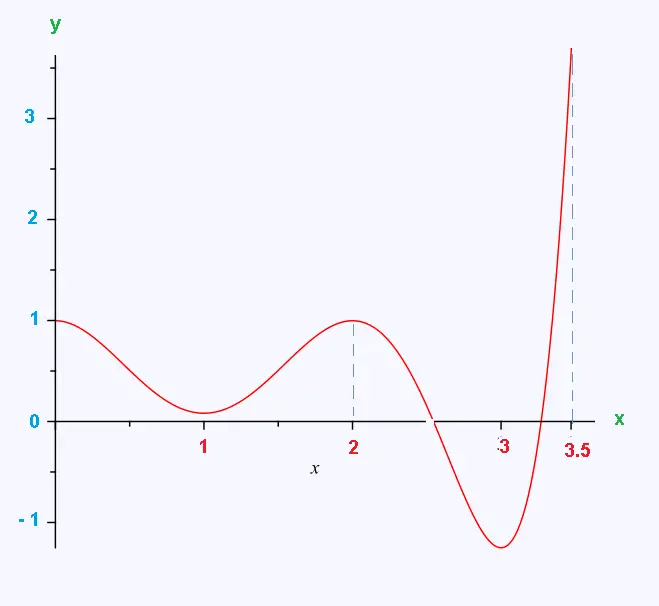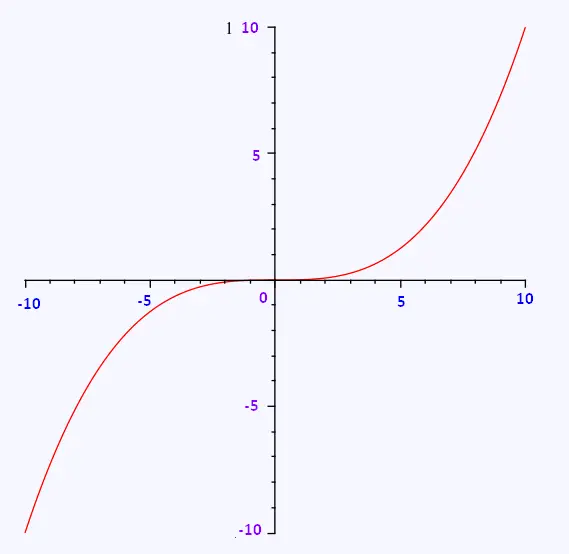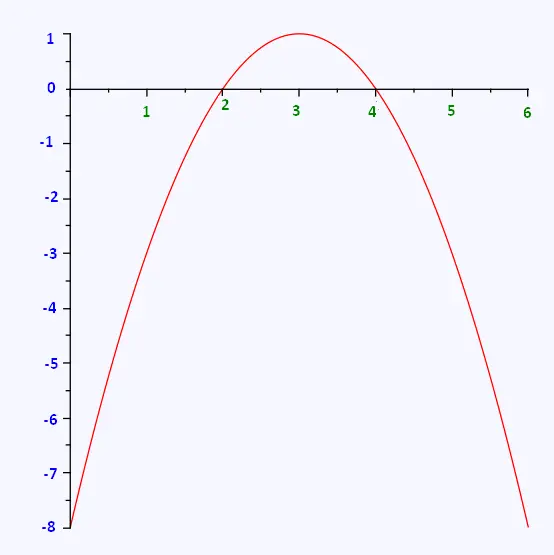Mathematics
functions of
several variables
functions of
several variables
Partial derivatives
Differential
Linear approximation
Error calculation
Extrema of a function
© The scientific sentence. 2010
|
Calculus I:
Functions of several variables
Extrema of a single variable function
Extrema of a single
variable function
We know how to find and study the maximum and
the minimum of a function of one variable.
For this we use the derivative. We will see in
this chapter how to find the maximum or the
minimum of a function of several variables.
Let's start with the case of a single variable.
Definition
Let f be a function defined over an interval I
and xo  I. I.
1. f(x0) is a global (absolute) maximum of f if:
f (x) = f (x0), for all x  I. I.
2. f (x0) is a local maximum of f if there is
an interval] ]a, b [ I containing
x0 such as: I containing
x0 such as:
f (x) = f (x0), for all x  ] a, b [. ] a, b [.
3. f (x0) is an global minimum of f if:
f (x) = f (x0), for all x  I. I.
4. f (x0) is a local minimum of f if there is
an interval] a, b [ I containing
x0 such as: I containing
x0 such as:
f (x) = f (x0), for all x  ] a, b [. ] a, b [.
An extremum (plural extrema) means either a
maximum or a minimum.
Exercise 1
Graphically, give the local and global
extrema of the function f defined in [0, 3.5]:

Solution:
On the graph we find that
in x = 0 and x = 2 we have a maximum local,
in x = 1 we have a local minimum,
in x = 3 we have a global maximum overall and
in x = 3, 5 we have an global maximum.
To detect local extrema we have the following
property:
Proposition
If f has a relative extremum in x = xo then
let f'(xo) = 0 either f'(x0) does not exist.
Exercise 2
1. Show that the function f (x)
= x2 + 7 has a global minimum in x = 0.
2. Show that the function f (x) = x2 is
defined on [-1; 1] admits a global maximum
in x = -1.
3. Show that the function f (x) = |x| + 2 has
an global minimum of x = 0.
Solution:
1. We have f'(x) = 2x. The function f' is defined
in R and is null when x = 0. So if f admits a
local extremum then it is in x = 0.
Since we have f (0) = 7 = x2 + 7 = f (x), we
deduct that we have a global minimum.
2. If -1 = x = 1 then x2 = 1. We have f (x) = f (1)
for x  [-1; 1]. [-1; 1].
So the function studied has a maximum in x = 1.
We notice that at x = 1 the derivative of the
function studied does not exist. Indeed, by
definition:
f'(1) = lim (f (1 + h) - f (1))/h
h → 0
This supposes that f (1 + h) exists when h> 0,
but here f is defined only on [-1; 1], so f'(1)
does not exist.
3. Here is the graphical representation of f

Figure Graphical Representation of f
(x) = | x | + 2.
We have f'(x) = -1 when x < 0 and
f'(x) = 1 when x > 0.
The function f' is not defined when x = 0. So if
f admits a local extremum then this one is in x = 0.
Like, we have f (0) = 2 = | x | + 2 = f (x),
we deduce that we have a global minimum.
Exercise 3
Let f be the function defined on R by f (x) = x3.
Does this function admit an extremum ?
Solution:
We have f'(x)= 3x2. The derivative is defined on R
and f'(x) = 0 when x = 0.
So, if we have an extremum then it is in x = 0.
Now, f(x) = x3 = 0 = f (0) for x = 0 and
f (x) = x3 = 0 = f (0) for x = 0 so f does
not have extremum.

Figure 4.3 - Graphical representation of
f (x) = x3.
We just saw that f'(x) = 0 is not enough to
guarantee the existence of a extremum. The
following property using the second derivative
completes this gap.
Indeed, by studying the concavity or convexity
of the function we can determine if a point is
a local extremum.
Proposition 2
Let f be a function defined over an interval I
and x0  I. Let ]a, b[ an interval containing x0. I. Let ]a, b[ an interval containing x0.
We suppose that f'(x0) = 0 and that f" exists on
]a, b[ I in this case: I in this case:
1. if f"(x0) > 0, then f (x0) is a local minimum.
2. if f"(x0) < 0, then f (x0) is a local maximum.
Exercise 4
Show that in x = 3 the function
f (x) = -x2 + 6x - 8 admits a local maximum.
Solution:
We have f'(x) = -2x + 6, we deduce f'(x) = 0
when x = 3.
On the other hand, f"(x) = -2. So f"(3) = -2 < 0.
Thus f admits a local maximum in x = 3.

Graphical Representation of f (x) = - x2 + 6x - 8
|
|